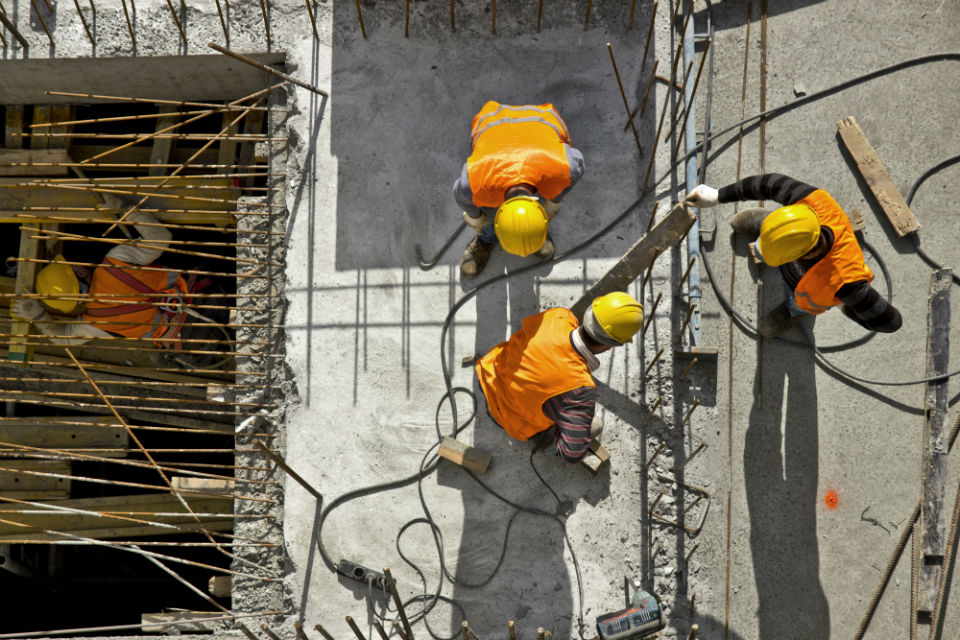Detailed guide: Creating a Digital Built Britain: what you need to know
Overview
Digital Built Britain is a partnership between the Department of Business, Energy & Industrial Strategy (BEIS) and Innovate UK to create a digital economy for infrastructure, buildings and services.
The programme is designed to transform how the UK construction industry and operations management professionals approach social and economic infrastructure through digital technology. This includes the way we plan, build, maintain and use that infrastructure, as well as the renewal, replacement and creation of new built assets.
All of this should help people to make better use of built assets, and provide better social outcomes to the challenges of urbanisation and an increasing population. It should also improve the UK’s productivity and support growth.
Digital Built Britain will:
- advance the skills of a wide range of people so that they can confidently use technology to digitise their construction projects and manage the built assets
- help UK businesses and organisations of any size to seize opportunities offered by technology and increase their revenue in domestic and international markets
- develop and promote the standards, practices and policies that underpin strong, innovative construction and operations management sectors
- establish new models of delivery and collaboration that allow the UK to retain its position as a global leader

What Digital Built Britain aims to do
Digital Built Britain seeks to digitise the entire life-cycle of the UK’s built assets.
Built assets provide important services to citizens. Using digital technologies in the design and construction process can improve their effectiveness and efficiency so they can provide better user experiences. This should also improve the productivity of the UK and other countries by creating new opportunities for growth through the export of expertise and services.
There are 2 main goals:
- to better understand the needs of users and enable ‘right first-time’ delivery
- to provide buildings and infrastructures as quickly and efficiently as possible
In addition, a digital approach will award greater levels of transparency. It will also give insights into how citizens use public services to allow for improvements based on their experiences in the future.
The Digital Built Britain programme was created to meet these needs. It aims to:
- maximise the lifespan of infrastructure and building facilities and networks to make them safely available to provide services for longer
- gain insights into how assets can be improved by measuring the in-service performance user behaviours
- provide new business models with better information on projects from initial design through to completion and then management
- develop strategies that allow the construction supply chain to be better integrated, especially with the manufacturing sector
- support engineering and construction services to be delivered more efficiently (whole life costs, time and carbon)
- identify any required new skills and systems for future construction projects early, to support the development before they are needed
- further develop and drive uptake of industry standards
- ensure that the UK remains at the forefront of digital working to maximise the export of UK digital services
What is building information modelling and how does it affect you?
Building information modelling (BIM) is one of a range of tools that will be used to digitise the built environment and operations management industries. It is a primary focus of the Digital Built Britain programme because it provides the most detailed analytical view of a built asset during the design and construction of a project.
BIM is used in conjunction with British Standards processes to provide a collaborative way of working. People working on a construction project are able to create and share information at defined stages of that project.
Using these methods with BIM supports the efficient design, delivery and maintenance of infrastructure and buildings. The data you generate is then available to help others in the supply chain to make more informed decisions to improve productivity and reduce waste.
The background
UK government’s 2011 Construction Strategy defined 4 levels of BIM. This was done to help clients and suppliers understand how BIM and digital technologies should be used on projects.
These levels were designed to support industry to create specific capacity at each level and to ensure appropriate standards for effective and fair procurement.
Government currently sponsors projects at Level 2. All centrally-funded government departments use this method, as set out in its Construction Strategy 2016-2020.
Level 3 has commenced its development and is expected to come to the market in mid-2020s.
The 4 BIM levels
Each of the 4 levels represents an increasing maturity in use of digitisation and collaboration in a construction or infrastructure project:
Level 0
Projects will use only 2D computer-aided design (CAD) drafting. There is very little collaboration. Any data that is exchanged is typically done so via paper or print.
Level 1
Projects will use a mixture of 2D and 3D CAD drafting. They will use a common data environment for the electronic sharing of data. This will often be managed by the main contractor and may be shared among team members. Projects may also use some standard data structures and formats.
Level 2
Projects will use intelligent, data-rich objects in a managed 3D BIM environment. All parties working on a project are able to combine their BIM and design data to collaborate and share information through the use of a common data environment (CDE). The CDE enables users to carry out checks against data validation strategies to make sure they are on target.
Level 3
Projects at this level are fully collaborative. They use a single, shared project view for data integration, which all parties can access and modify as allowed through process and security controls.

What comes next
Digital Built Britain builds on the achievements of the Level 2 BIM programme. It will support the next step to Level 3 BIM and in turn enable wider digitisation in construction and operations management.
New and emerging technologies, such as the internet of things and advanced data analytics, with the growing digital economy will create further opportunities.
Digital Built Britain will support these opportunities by:
- helping everyone who has a stake in public sector building and infrastructure to work together to provide long lasting solutions to the biggest industry problems
- making the roles of consultants, contractors and manufacturing suppliers fit for the future
- improving technical solutions and reducing costs
- using service performance data to develop new business models for infrastructure and building design, delivery, operation and adaptation
- ensuring that the increase in availability and use of operational and performance data is underpinned by appropriate Level 3 security measures that protect national security
- supporting all organisations that need to achieve Level 3 to do so, by providing a practical stepping stone through the development of Level 2 C (Convergence). This includes SMEs and local authorities
Get involved
As the Digital Built Britain programme evolves we hope to develop and launch a number of working groups. These groups will inform the focus of our work and determine the future of the digital economy in construction and operations management.
If you would like to get involved please contact BIM.Support@innovateuk.gov.uk to register your interest.